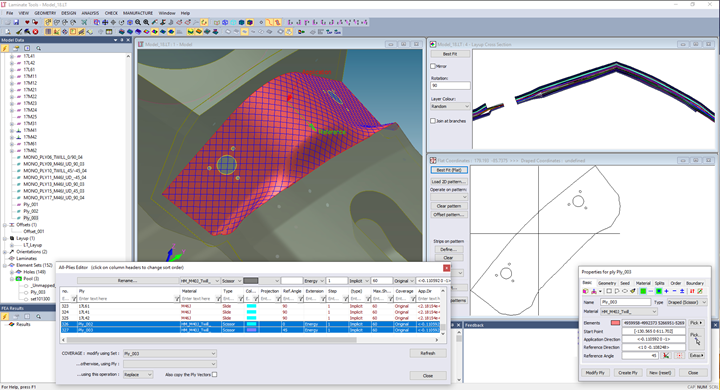Anaglyph unveils version 5 for Laminate Tools software application
The standalone Windows software yields major feature additions and several engine redevelopments to maximize composites design efficiency and a flexible workflow.

Photo Credit: Anaglyph Ltd.
Anaglyph Ltd. (London, U.K.) has released version 5 (see “Anaglyph releases Laminate Tools version 4.10”) of Laminate Tools, a standalone Windows software application that integrates the design, analysis and manufacture of composite structures. Apart from the addition of several important features, a number of fundamental technologies have been introduced behind the scenes to improve efficiency and lay the ground for important future changes.
For example, the underlying data engine has been redeveloped, so that data storage and manipulation are carried out in ways aligned with current composite designer requirements. This improvement maximizes efficiency when applying simulations or collecting information for graphical presentation or export.
Similarly, Anaglyph points to the 3D model graphics engine, which has been completely rewritten to support the latest OpenGL standard, taking advantage of state-of-the-art graphics hardware capabilities, and extending product life significantly.
The Graphical User Interface (GUI) has also been thoroughly redesigned. Application windows may now be floating, docked, tabbed, grouped or hidden, delivering a custom screen layout that improves productivity further, while legacy arrangements are possible for a smoother transition.
Major features newly added include an all-ply interactive editor window for easy global design changes; a 2D Cross-Section View; and the introduction of a proprietary, binary and efficient file format (.LT). A comprehensive list of new features can be found on Anaglyph’s website.
Laminate Tools addresses the entire process of composites structural design (geometry import, design, analysis, check and manufacture). It links the various disciplines, communicates original data between all involved in
the process and is focused on saving users time. Laminate tools interfaces with most CAD and FEA applications, enabling for a flexible workflow. It is used by composite structures designers and stress analysts in automotive, aerospace, marine, energy and leisure end markets.
















